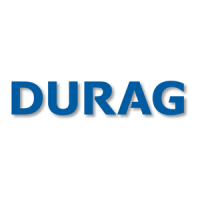3 | Explosion protection
18
D-LX 201/721
3.3 Zone allocation as per ATEX
The areas where potentially explosive mixtures can develop are in principle divided
into zones with different safety levels. Distinctions are made between gaseous and
dust-based atmospheres, and also based on the expected frequency of the develop-
ment of explosive mixtures.
Zone Potentially explosive atmo-
sphere
Suitable devices
Zone 1 Frequent (2), gas (G) II 2 G
Zone 2 Infrequent (3), gas (G) II 2 G, II 3 G
Zone 21 Frequent (2), dust (D) II 2 D
Zone 22 Infrequent (3), dust (D) II 2 D, II 3 D
Table3.1: Zones for the use of explosion-protected flame monitors
3.4 Temperature classes
Flammable gases and dust are divided into temperature classes based on their igni-
tion temperature. The ignition temperature of a potentially explosive gas or dust atmo-
sphere gives the maximum surface temperature that may be reached here by the
devices being used.
Electrical operating materials that may be used in hazardous areas indicate the tem-
perature classes of the gases for which they are suitable. The temperature class spe-
cified on the device must be the same or higher than that of the potentially explosive
atmosphere.
The surface temperature of the devices is influenced by the ambient temperature.
Therefore, the ATEX ambient temperature (Ta) specified on the device (type label)
must also be complied with.

